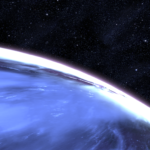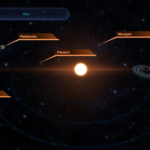System Specs:
- Stellar Mass: 1.016 Sol Masses
- Stellar Class: G
- Luminosity: N/A Sol
- Planets: 5
- Moons: 0
- Asteroid Belts: 0
- Asteroids: 0
- Objects: 0

–
Planets Directory:
- Paravin
- Huningto
- Mavigon
- Farcrothu
- Patatanlis
- Mass Relay
–
Paravin:
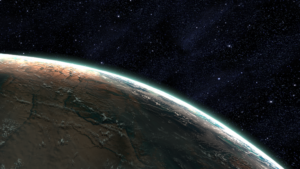
- Orbital Distance: 0.65 AU
- Orbital Period: 0.5 Earth-years
- Keplerian Ratio: 1.099
- Radius: 4,839 km
- Day Length: 0.5 Earth-hours
- Atmospheric Pressure: 0.0 atm
- Surface Temp: 414 °C
- Surface Gravity: 0.5 g
- Mass: 0.286 Earth-masses
Paravin is a small, unremarkable rock world. The surface is scorching hot, and mainly composed of calcium with deposits of aluminum. Paravin’s low mass has left it tidally locked to the star Han. If there were any resources of value, mining stations could be established on the relatively temperate “twilight band”.
Survey Text
“Scans of Paravin revealed an unmanned station in geosynchronous orbit. Your salvage team found no evidence on the origins of the station, but they did find one of Matriarch Dilinaga’s writings on board.”
–
Huningto:
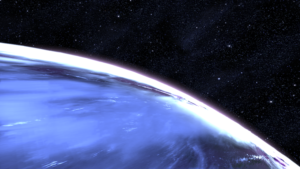
- Orbital Distance: 10.025 AU
- Orbital Period: 31.8 Earth-years
- Keplerian Ratio: 0.996
- Radius: 73,733 km
- Day Length: 16.7 Earth-hours
- Atmospheric Pressure: N/A atm
- Surface Temp: N/A °C
- Surface Gravity: N/A g
- Mass: N/A Earth-masses
Huningto is a Jovian-sized gas giant with a standard hydrogen-helium atmosphere. Traces of methane give the planet its distinct cobalt blue tint. Spectral analysis indicates its extensive ring system is mostly composed of ice crystals. Huningto has an exceptionally powerful magnetic field, which creates strong radio interference throughout the inner system.
–
Mavigon:
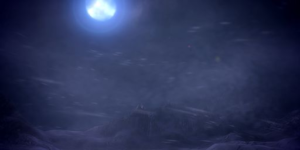
- Orbital Distance: 12.125 AU
- Orbital Period: 42.3 Earth-years
- Keplerian Ratio: 0.996
- Radius: 4,906 km
- Day Length: 52.0 Earth-hours
- Atmospheric Pressure: 0.82 atm
- Surface Temp: −124 °C
- Surface Gravity: 0.8 g
- Mass: 0.47 Earth-masses
WARNING: Level 2 Cold Hazard
Mavigon is a small rock and ice planet with a thin atmosphere of ammonia and methane. The surface is frozen, and mainly composed of tin with deposits of potassium.
The planet has rudimentary ammonia-based life, mainly concentrated around geothermal vents deep underground. Severe storm cycles are common; due to limited visibility, navigation may be difficult.
–
Farcrothu:
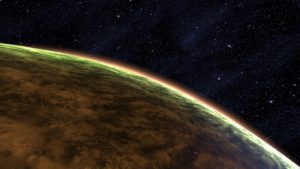
- Orbital Distance: 23.2 AU
- Orbital Period: 112.1 Earth-years
- Keplerian Ratio: 0.994
- Radius: 66,014 km
- Day Length: 8.4 Earth-hours
- Atmospheric Pressure: N/A atm
- Surface Temp: N/A °C
- Surface Gravity: N/A g
- Mass: N/A Earth-masses
- Satellites: >12
A standard hydrogen-helium gas giant, Farcrothu is only distinguished by its moons; several dozen of them have been sculpted into the likenesses of an arthropodal alien race not yet known to Council science. Radiometric dating suggests the moons were worked over half a million years ago.
–
Patatanlis:

- Orbital Distance: 44.45 AU
- Orbital Period: 297.4 Earth-years
- Keplerian Ratio: 0.993
- Radius: 8,927 km
- Day Length: 36.0 Earth-hours
- Atmospheric Pressure: 0.06 atm
- Surface Temp: −174 °C
- Surface Gravity: 2.8 g
- Mass: 5.445 Earth-masses
Patatanlis is a large rock world, with an unusually thin atmosphere of hydrogen and carbon monoxide. The frigid world’s crust contains extensive deposits of uranium, and occasional lodes of naturally occurring plutonium. With a total mass more than four times that of Earth, Patatanlis should have a significantly thicker atmosphere. This unusual feature has flagged it as worthy of scientific investigation, but the need for expensive amounts of radiation shielding has deterred interest.
–
–
video


